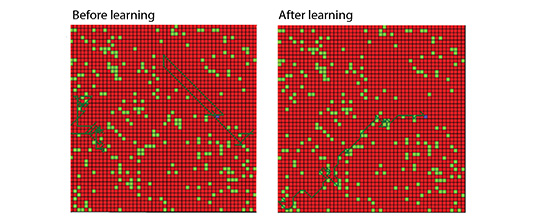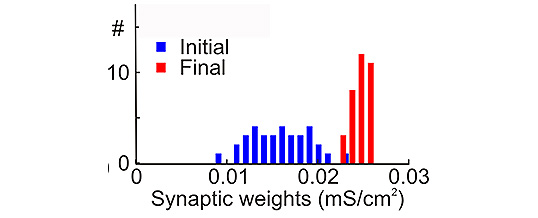Rewarded spike timing dependent plasticity (STDP) has been implicated as a possible learning mechanism in a variety of brain systems. This mechanism combines unsupervised STDP that modifies synaptic strength depending on the relative timing of presynaptic input and postsynaptic spikes together with a reinforcement signal that modulates synaptic changes. In this study, rewarded STDP was implemented as part of a spiking network model of excitatory cells and inhibitory interneurons. The network was used to model basic foraging behavior ...
Read More →MAR


